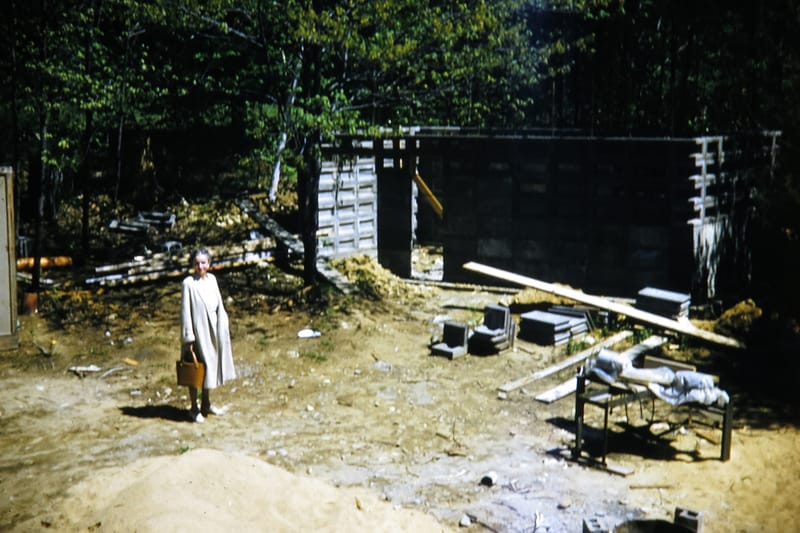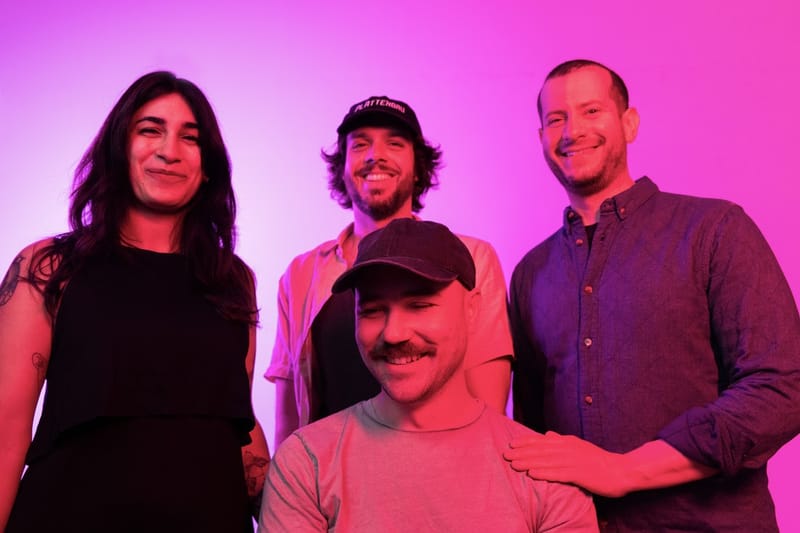The hunt for history: Run club discovers the city’s hidden gems
On this particular night, I’m joining in on a “Historical Scavenger Hunt” organized by run club member and local historian Stan Garrity.


MANCHESTER, NH – I was standing outside Bunny’s Convenience on Elm Street when I realized I might be in over my head. A steady flow of adults dressed in bright compression gear jogged by, each equipped with digital fitness trackers, shoes that looked like they felt like memory foam mattresses and small bottles of water attached to their hips. I was wearing a sweatshirt, tight-ish jeans, flat-bottom high tops and was drinking a carbonated chemical energy mixture. These Spartans, by comparison, were congregating across the street at Bonfire Restaurant & Country Bar, where I was to join them.
They are part of the Walk, Run, Brew Running Club, a pseudo-philanthropic social club based around, you guessed it, cardio and a rewarding brew or two.
Christine Lewis, owner of Total Image Running and founder of Walk, Run, Brew, says she started the club in pursuit of a more inclusive running group.
“People had a lot of run clubs, but they didn’t have anything for walkers and bikers, so we started one that was more casual and welcomed everyone at all levels,” Lewis said.
Lewis said that the club also does what it can to get the community together. They regularly host celebrations and charitable events, like food and toy drives, and benefit races.
On this particular night, I’m joining in on a “Historical Scavenger Hunt” organized by run club member and local historian Stan Garrity.
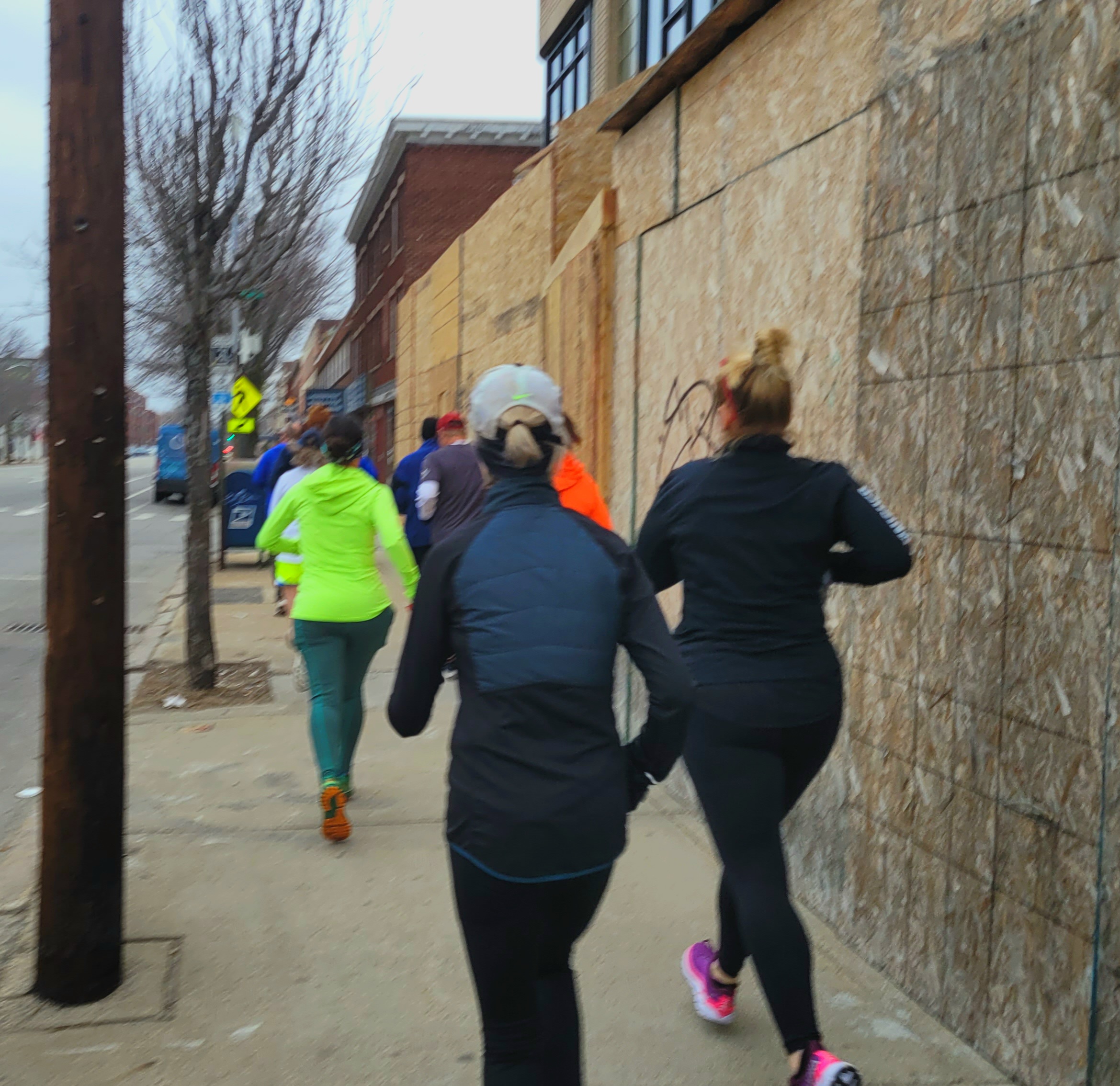
This isn’t the first scavenger hunt Garrity has put on. “This all started, jeez maybe eight years ago,” Garrity said.
“When I started running I started running with a lot of people and we would go around the city and they would ask me ‘what’s that? What’s that,’ and I’ve been here my whole life so I knew what ‘that’ was and the history of that building or that place or that area and they said, ‘Stan, you should do history tours,’,” Garrity said.
Garrity took their advice and started hosting his own historical tours around the city. Eventually he decided to have a little more fun with them and made it into a scavenger hunt.
The first scavenger hunt took place on a frigid snowy December evening.
“It started out as a timed race. It was a blast, but it was insane,” Garrity said. “People were running as fast as they could, running around in circles, they were lost, couldn’t find where they were going.”
The scavenger hunts have been tradition ever since, even moving out of Manchester to Portsmouth from time to time. “People like to do it, we like to raise a little money while we do it and at the same time people learn about the city,” Garrity said.
“I had a person from Seattle who was in the first one. She had been living here for a few years and she said, ‘Stan, I appreciate this city a lot more now than when I first came here,’” Garrity said.
He does his best to keep the hunts fresh and tries to find landmarks that show off the evolution of Manchester. Thankfully, our city never disappoints.
“I’ve done so many it’s hard to find new things,” Garrity said. “But, incredibly I still find new things! Things that I see; people don’t see these things, but tonight they’re gonna see it because they gotta find them.”
“And you’ll be running with us,” Garrity said.
I knew that would be my biggest challenge writing this story. I am not a runner. The last time I ran with intent was in college and that was only for about a mile at a time.
Like most Americans, I do my best to run as little as possible. To me, the idea of running clubs has always seemed like demented pagan conclaves hiding out in the woods, trying to outrun some ancient evil. They confuse and frighten me with their enthusiasm for what, to me, amounts to physical torture. But what better way to understand a people than to live amongst them, even if it is for an evening.
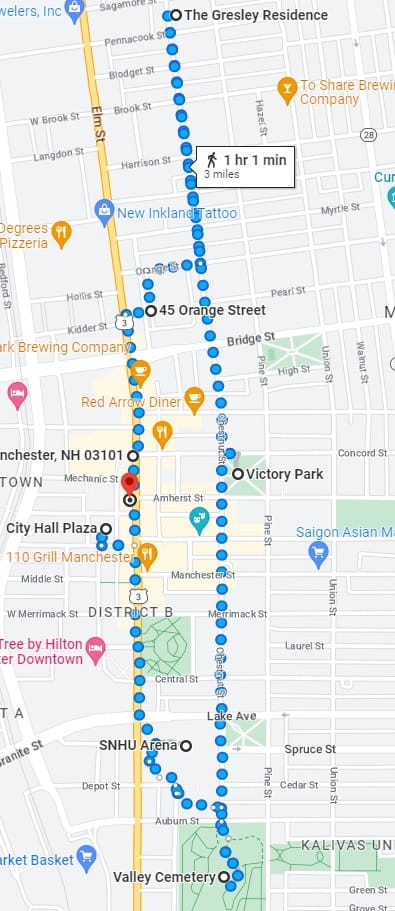
With a sharp whistle Stan got the attention of the group of about 40 runners. He explained that he would be handing out a list of seven hints telling us where to go, where our boundaries would be and the rules of the race. In all, the run would be a three-mile loop bringing us back to Elm Street.
The club got amped. I, however, was already breaking into a sweat. That was three times my personal record. The only thing I could think about was petering out halfway and having to walk the course in shame.
I pushed that to the back of my mind and fell in with “the tamer group” of 11 runners while they debated the first clue: “Trolley cars ran in Manchester from 1895-1940. From 1901 – 1926 the Manchester Traction, Light and Power Company ran that service. Find a manhole cover marked M. T. L. & P. Co. Hint: You will find one where the main street makes a bend.”
Someone said they knew where that was and like that, we were off. I shook out my legs and situated myself near the rear of the column. The other members of the group started to chit-chat and catch up with each other, like it was a day at the beach with friends, which astounded me because it was all I could do to maintain my breathing.
The first clue was probably planned as the warm-up location, because after a short block dash we found the manhole cover; it’s right in front of HP Hampshire Plaza.
“So the first one, it’s about the trolley car system in Manchester run by Manchester Traction, Light and Power Company and they made manhole covers with their names on them. They’ve been on the street for a hundred years or so,” Garrity said.
The first leg of the run was over, so far, not too bad. I didn’t feel like I was going to throw up yet; that’s a good sign. I got around ten seconds of downtime before a picture of the team was snapped and we pushed off to the next one.

Item two: Find a building mural of a girl holding balloons. Hint: You can find it on a street named for a place where people go to worship.
When my team was trying to figure out which street to turn on (Church Street) I piped up because I actually knew where this one was.
“Oh, that one’s behind The Breezeway,” I said.
A couple teammates began to celebrate because they thought they scored a secret local history buff, but truthfully I just happen to walk by the mural almost every day on my way to work.
They joked on how maybe they only just got a little lucky and snapped a picture.
“So, there’s some new history in here too,” Garrity said. “Nowadays, at that location, they’re putting murals up there; they used to have advertisements up there, called ‘ghost ads,’ because the businesses they’re advertising aren’t around anymore and now they’re being replaced with murals. They look nice.”
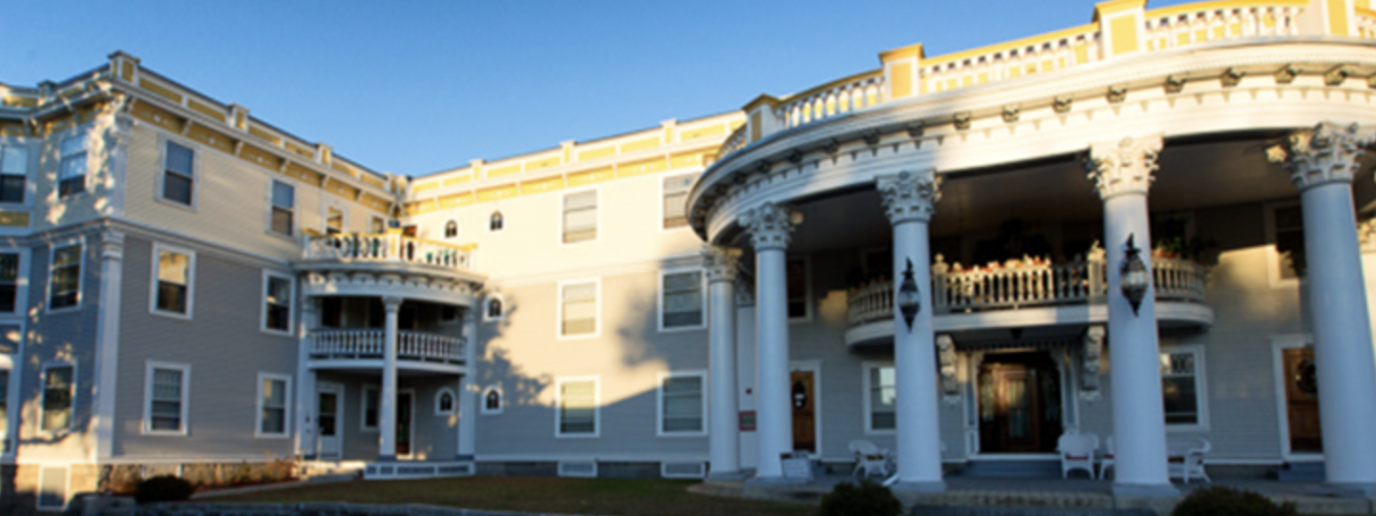
Item 3: Find the GRESLEY. Built in 1900, this building has won many awards for its architectural beauty. Hint: You can find it on a street named for a tree that produces fruit.
After figuring out chestnuts were technically a fruit we hit the ground running.
This is where the run really took off. This next leg was a half mile. My body started to feel the shocks of the pavement and a little tingle started in my lungs, but my saving grace was probably something I never thought of before while running: pace. We were at a comfortable light jog, something I could actually keep up with for the moment.
By the time we got to the Greasley I felt my hair start to damp and my hands were burning from the chill. That’s when I noticed everyone else was wearing light gloves, another indication of how far out of my depth I was.
“[The Gresley] is a massive, beautiful work of architecture. It was built in 1910, something like that, over a hundred years old,” Garrity said.
Today The Gresley is apartments. It’s still in beautiful condition too.
Item 4: Find an open book that reads: “1918, In memory of the Manchester men who died in the Great War that the world be safe for democracy in a righteous cause they have won immortal glory and have nobel served their nation in serving mankind.” Signed, Woodrow Wilson. Hint: This park was first named Concord Common.
Someone realized that must be Victory Park, located on the corner of Pine and Concord streets. The park was just past where we started running a whole .7 miles back, the way we came. I tried not to think about that and started running.
By the time we got to Victory Park I noticed I was starting to slip further into the back line. I was thankful for every red light intersection we came across, enthusiastic for any kind of respite. I was starting to sweat through my sweatshirt. I rolled up the sleeves and saw red spiderwebs wrapped around my arms.
“This one we’re learning where the parks are and what are in them,” Garrity said.
We snapped another picture and figured out the next clue much quicker than I would have hoped.

Item 5: The Amoskeag Manufacturing Company produced 600 miles of cloth a day at its height, making it the largest producer of textiles in the world. Hint: go to the Valley Cemetery and find a post with the initials A.M.C.
This was another long shot and another .7 miles. I could feel the exertion in my face. Spit began to pool to an uncomfortable amount in my mouth and by the time we got to the lamppost I was near my limit and looking quite silly. My hands on my hips, I was trying not to hunch over while it looked like everyone else was itching for more.
“Next we had to go to Valley Cemetery, that’s where all the history is in the city anyway all the dead people have a history, but the other day I happened to notice all the lampposts are marked A.M.C., Amoskeag Manufacturing Company,” Garrity said.
“They’re significant because the manufacturing company owned just about the whole city, about 32,000 acres, they bought it up, sold it to the city for low amount of money when the city started to pop up in 1846,” he said.
“We became the city in 1846, we were the first city in New Hampshire and we were the largest, still are. So its a big part of our history and the lampposts in that park are 150 years old,” Garrity said.
All too soon we took off again, this time to find a plaque that honored Ray Wieczorek, the mayor of Manchester from 1989-2000. Hint: Look for a building name for an accounting college.
As we left the cemetery I felt like I was on the brink of joining the dead, as well. I melted toward the back of the pack. I fell further behind getting sweatier and more asthmatic with each step. By the time I caught up, much to my chagrin, my team had already snapped the picture of the sixth location.
“Then we went to SNHU [Arena],” Garrity said. “There’s a marker there for Ray Wieczorek Square, he was a long-time mayor of the city, eleven years, something like that. He was very instrumental in getting the SNHU arena built.”
I caught my breath, if only for a second before being spurred on by the threat of becoming a stain on an Elm Street crosswalk. I knew that this was the last stop and we didn’t have to go far, a measly (by comparison) .3 miles.
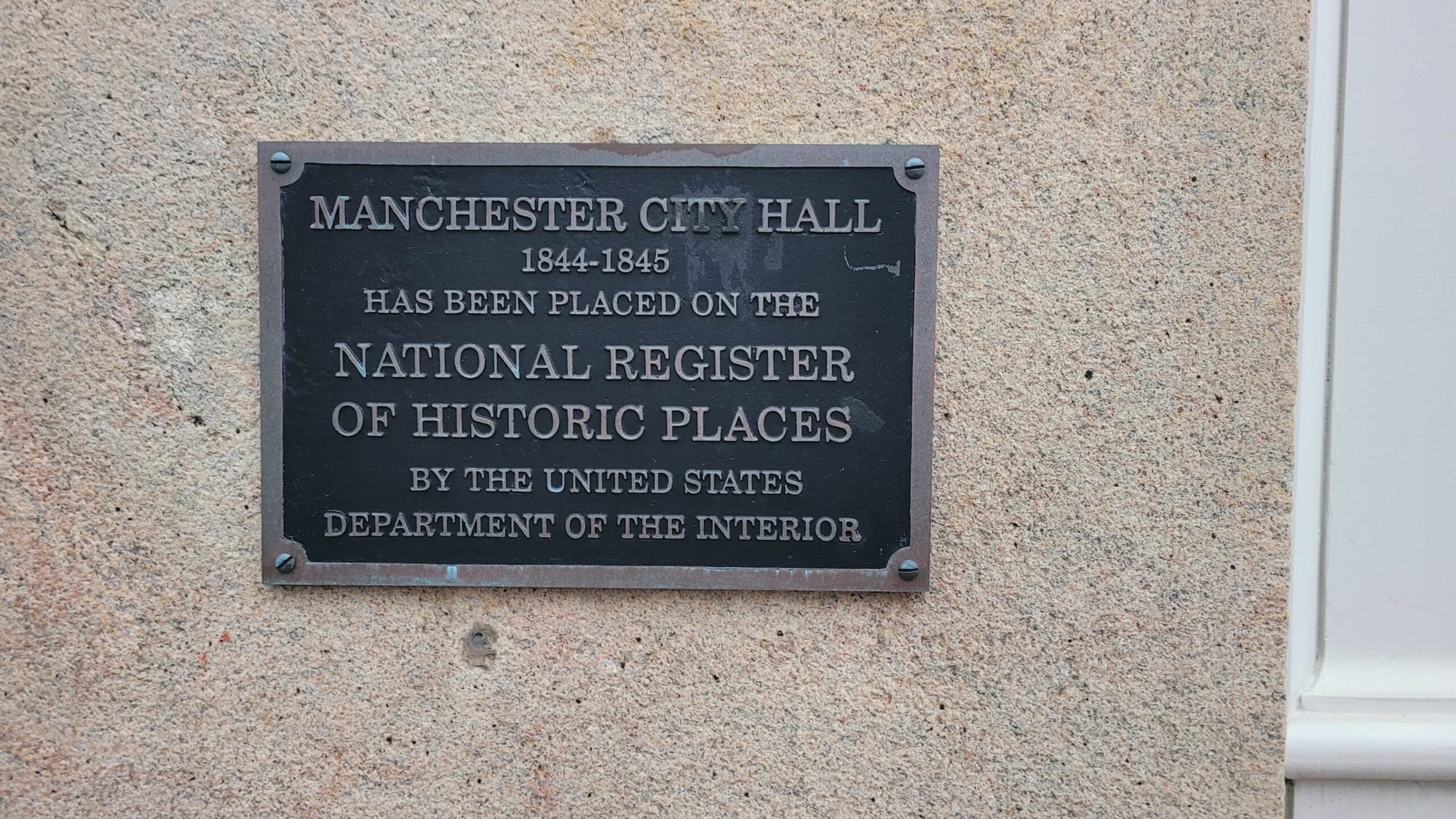
Item seven read: “Manchester City Hall was built in 1844-1845 and has been placed on the National Registry of Historical Places. Find the plaque that commemorates this.
Once I knew I was safe on the sidewalk I finally began to ignore the shame of falling out of the pack and submitted to my fatigue. I took a few deep breaths, City Hall in sight. I brushed my sweaty mop out of my face and thought finally I was home free. However, another team behind us had different plans for me.
“Come on, beer-thirty!” someone said.
I felt a small tap on the back as Garrity whizzed by. “We gonna finish this or what?” he said.
I decided to embrace the pain for another couple hundred feet and got there just in time to snap a pic with my team in front of city hall.
“Then we had to go to City Hall,” Garrity said. “This lets everyone know how old our city hall is. There actually used to be a jail in there, a holding cell. That cell is still there and it’s used for archives now because it’s nice and dry and it doesn’t leak.”
Everyone cheered. It was finally “beer thirty,” a well-deserved one at that. We walked back to Bonfire where Garrity handed me a beer ticket and, after gasping at the bartender for a water and a Woodstock Winter Ale, I could finally take a seat and let the proper amount of oxygen reach my brain.
As I sat and sipped on a beer much too heavy for my post-workout I could take in how important this club was to everyone in it. People gathered up and joked, talked about the next run or how their families were doing. It was clearly the highlight of their hump day.
As soon as I could breathe again I got to talking to Melindia Flanagan, a relatively new member. She knew right after the first run that she would be joining.
“I love how nice everyone is and how there’s a non-competitive atmosphere,” Flanagan said. “In the running world there’s a little bit of an edge. People will always look over their shoulder, get real competitive and I don’t have time for that.”
Everyone I talked to agreed that the thing that brought them in the club together was that “running alone is really boring,” and that the sense of community the club provides is invaluable.
Daisy Atkinson, captain of our group, has been running with the club since it started, around 2019. She’s been running with the same group for years and they’ve all become quite close.
Atkinson says the club keeps her going.
“It’s just good to have a group to get out with and get you motivated to get out on a Wednesday night when it’s twelve degrees out, or when it’s raining, or on the flip side, it’s 86 out, and go running and be a little more social and active. It’s a good motivator,” Atkinson said.
Gen Soares knew right away that she found what she was looking for in a running club. Sensing the easygoing vibe and the nature of its other members she said “when I came in I thought these might be my people.”
Walk, Run, Brew hosts these types of events all the time, the historical scavenger hunts at least twice a year.
Garrity loves how Manchester always has something new to teach people and that the club can get everyone active while they learn.
“Every time we go to a place I hope someone learns something about the city. We’ve done this many times and there’s always something new and at the same time we stay in shape,” Garrity said.
As I felt my legs begin to turn to goo I decided it was time for me to start the walk back to my apartment. I plodded on, chilly from the sweat that caked my body and my muscles pinched with every step.
But, eventually, about halfway home, all that passed and I started to feel great about what I’d accomplished and started to feel that post-workout euphoria that I always forget about. I could already feel some of that drive the club members talked about had rubbed off on me.
In fact, I think I just might start running; that is, if the soreness in my thighs ever fades.
To learn more about Walk, Run, Brew go to their website: https://runsignup.com/Club/NH/Manchester/RunWalkBrew. And if you want to run (or walk) the scavenger hunt route yourself please see the attached map.


